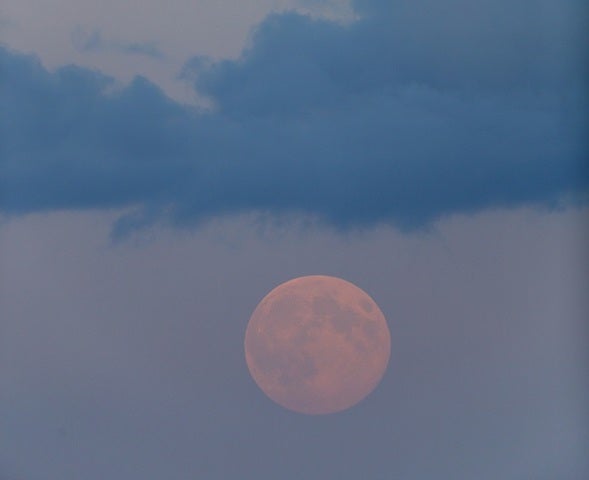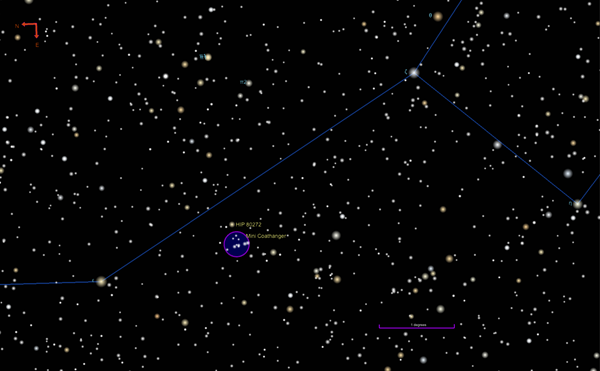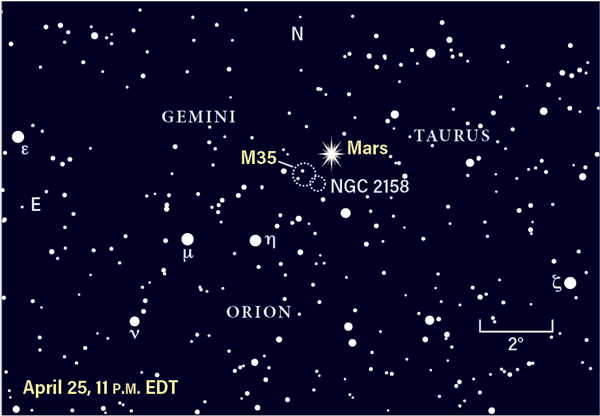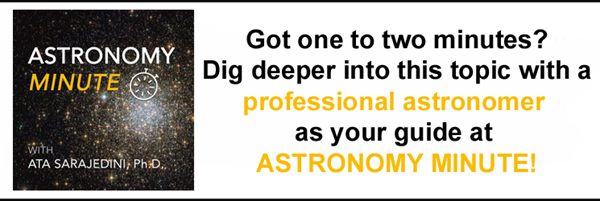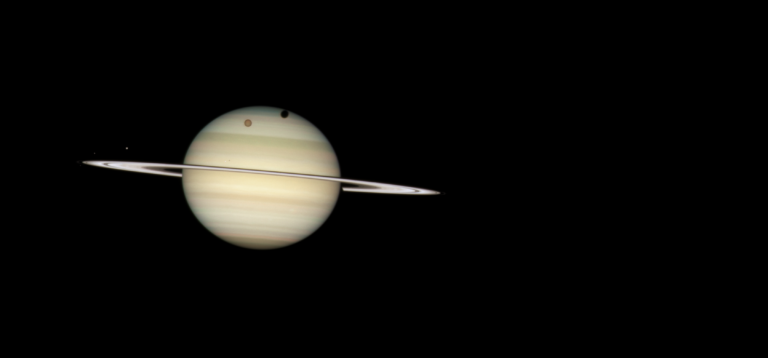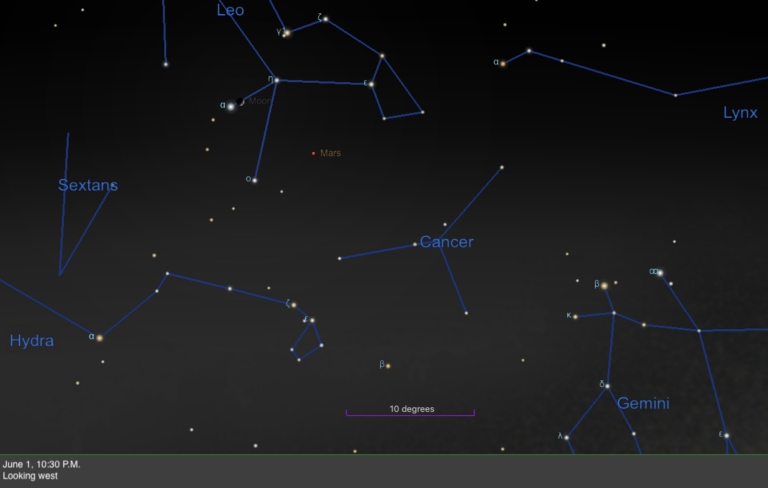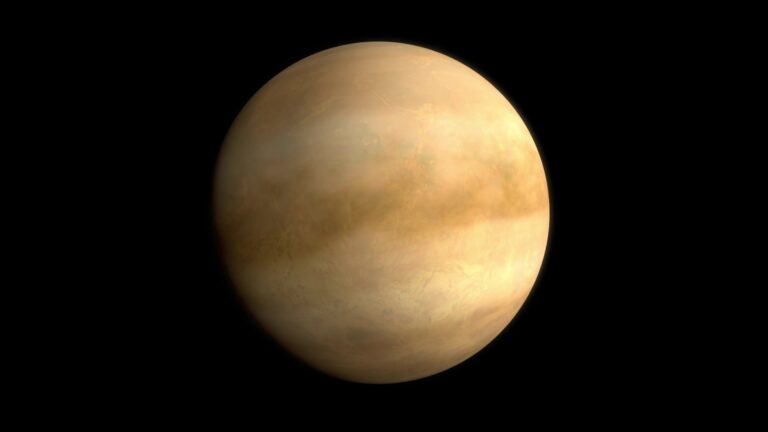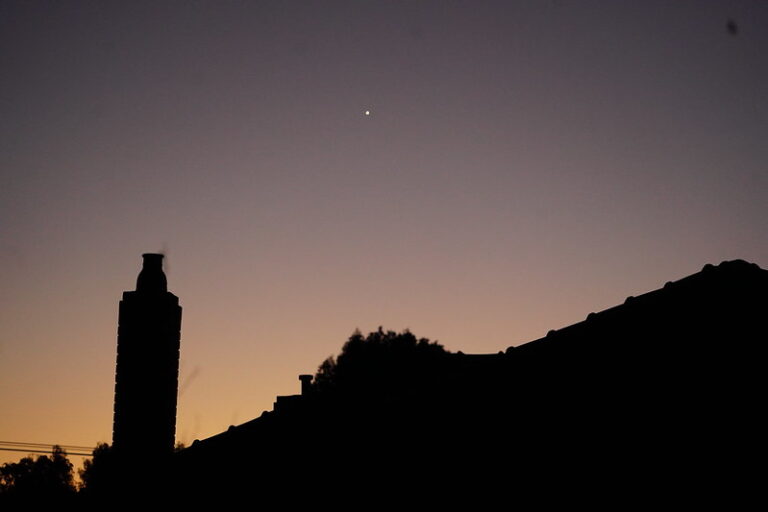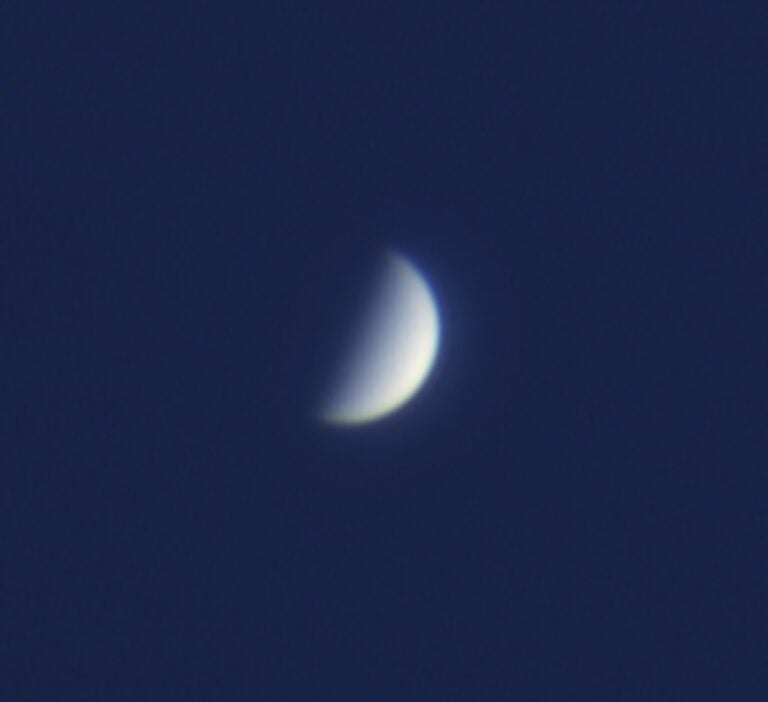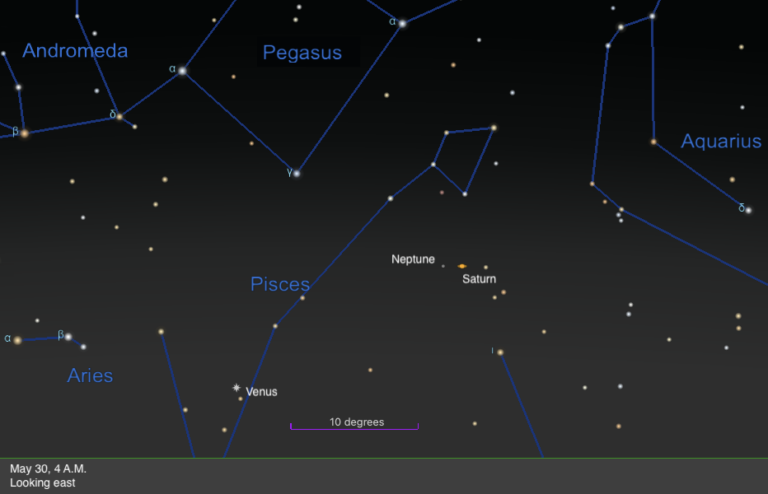Friday, April 23
Corona Borealis the Northern Crown is a small constellation tucked between Hercules, Serpens Caput, and Boötes. It represents the crown of the princess Ariadne, who helped Theseus defeat King Minos’ Minotaur. The constellation’s alpha star, 2nd-magnitude Alphecca, is also commonly referred to as Gemma.
Within this small, unassuming constellation is a curious variable star: R Coronae Borealis. Located about 3.5° northeast of Alphecca, R Cor Bor is an unpredictable variable that usually appears around magnitude 6. But its brightness can vary wildly, even dipping as faint as magnitude 14 before brightening again. Astronomers aren’t entirely sure what causes these changes, but leading theories include an aging star undergoing flashes of helium burning or a merging binary white dwarf system.
Either way, take a look tonight to see whether you can spot this strange star. Glenn Chaple’s June 2020 column includes a handy chart showing Corona Borealis and the brightness of its components for easy comparison with R Cor Bor.
Sunrise: 6:10 A.M.
Sunset: 7:47 P.M.
Moonrise: 3:46 P.M.
Moonset: 4:34 A.M.
Moon Phase: Waxing gibbous (84%)
*Times for sunrise, sunset, moonrise, and moonset are given in local time from 40° N 90° W. The Moon’s illumination is given at 12 P.M. local time from the same location.
Saturday, April 24
Last week, we hunted down the famous Coathanger asterism in Vulpecula. Now, it’s time to up the challenge: Let’s find the smaller, fainter, aptly named Mini Coathanger, located in Ursa Minor.
You can begin your search as soon as the sky is dark after sunset. Look North to find the familiar Little Dipper, which is itself an asterism within the constellation Ursa Minor the Little Bear. The Mini Coathanger is located between the star in its handle nearest the cup, magnitude 4.2 Epsilon (ϵ) Ursae Minoris, and magnitude 4.3 Zeta (ζ) Ursae Minoris, the star marking the upper left-hand corner of the cup. Look just below (southeast) a line connecting the two stars, and you’ll find the Mini Coathanger about 1.9° south-southwest of Epsilon. The asterism sits 0.3° east-southeast of the magnitude 8 field star HIP 80272.
The Mini Coathanger is small — only about 20′ by 10′. Its stars range from 9th to 11th magnitude, so you’ll need larger binoculars or a small scope to pick them all out.
Sunrise: 6:09 A.M.
Sunset: 7:48 P.M.
Moonrise: 4:59 P.M.
Moonset: 5:04 A.M.
Moon Phase: Waxing gibbous (91%)
Sunday, April 25
Mars sits within 1′ of the open cluster M35 tonight. Located in Gemini the Twins, the Red Planet shines at magnitude 1.5 and spans 5″. M35, which sits 2,800 light-years away, appears 28′ across. Its magnitude 5.3 glow is within reach of the naked eye from a dark site, although the bright Moon may reduce its visibility tonight. Binoculars or a telescope will definitely net you this gaggle of stars — plus a bonus: NGC 2158, a smaller, fainter (magnitude 8.6) open cluster just 0.5° southwest of M35.
Mars will glide north of these star clusters over the next few days, so make sure to revisit this region after dark to watch the planet journey deeper into the Twins’ territory.
Sunrise: 6:07 A.M.
Sunset: 7:49 P.M.
Moonrise: 6:14 P.M.
Moonset: 5:32 A.M.
Moon Phase: Waxing gibbous (97%)
Monday, April 26
Jupiter now resides in Aquarius, after crossing over from Capricornus on the 25th. The gas giant shines a bright magnitude –2.2 and appears roughly level with magnitude 2.9 Deneb Algedi, located 4.5° to its southwest. Saturn lies nearly 15° west of Jupiter, rising earlier and climbing higher in the sky more quickly. Both are above the horizon by about 3:30 A.M. local time.
All four of Jupiter’s largest moons — Io, Europa, Ganymede, and Callisto — are on display this morning. Ganymede (farthest out) and Europa sit to the giant planet’s east, while Io and Callisto (farthest out) sit to its west.
If you follow a line drawn from Saturn to Jupiter further east, you’ll eventually hit Neptune, about 24.5° east of Jupiter and rising by about 4:30 A.M. local time. There isn’t a lot of time to catch the magnitude 7.8 ice giant in binoculars or a telescope before the sky grows too light, but it’s a great opportunity to challenge yourself and your observing skills. For a closer signpost, locate 4th-magnitude Phi (ϕ) Aquarii; Neptune is a little less than 5° east of the star and about halfway between two magnitude 10 field stars.
Full Moon occurs late this evening at 11:32 P.M. EDT. April’s Full Moon is also known as a Pink Moon, and this month it occurs a scant 12 hours before the Moon will reach perigee, our satellite’s closest point to Earth as it orbits our planet. Technically, that makes this month’s Full Moon also a Super Moon, which occurs when the Moon is Full while closest to Earth.
Next month’s Full Moon is a Super Moon, too — in fact, May’s Full Moon, which occurs May 26, takes place when the Moon is 0.04 percent closer to Earth than it is this month, giving it the crown as this year’s largest apparent Full Moon.
Sunrise: 6:06 A.M.
Sunset: 7:50 P.M.
Moonrise: 7:31 P.M.
Moonset: 6:02 A.M.
Moon Phase: Full
Tuesday, April 27
The Moon reaches perigee — the closest point to Earth in its orbit around our planet — at 11:22 A.M. EDT. It will then sit just 222,064 miles (357,377 kilometers) away.
Located in Libra and rising within an hour of sunset, the bright Moon will dominate the sky tonight. It’s admittedly a bit difficult to observe fine detail on the Moon when it’s Full, as the direct angle of the sunlight hitting the lunar surface washes out the landscape as shadows are all but eliminated. Despite this, it’s a great time to observe certain features, such as the dark seas, or maria. The Seas of Serenity and Tranquility sit in the lunar northeast (northwest on the sky), while the Ocean of Storms seems to dominate the lunar west (east in the sky). In the lunar northwest lies the large Sea of Rains (also called the Sea of Showers).
Several of the Moon’s bright craters, many of which feature large sprays of light-colored rays, also stand out tonight. In the lunar south, the large crater Tycho clearly dominates. On the Moon’s western side (again, east in the sky), look for Kepler, Aristarchus, and Copernicus. In the lunar east, there’s Stevinus and Langrenus.
The Full Moon can be bright, particularly when you’re observing with binoculars or a telescope. You can cut down the glare with a Moon filter or by pumping up the magnification even more — this shrinks your field of view, which also reduces the amount of light bouncing off the light lunar surface and into your eyes.
Sunrise: 6:05 A.M.
Sunset: 7:51 P.M.
Moonrise: 8:50 P.M.
Moonset: 6:33 A.M.
Moon Phase: Waning gibbous (99%)
Wednesday, April 28
The tiny dwarf planet Pluto is stationary against the background stars at 3 P.M. EDT. Observers with larger telescopes can try to spot the distant world early in the morning, a few hours before sunrise. A challenging magnitude 15.1, Pluto sits about 1.5′ due west of a magnitude 10 field star in Sagittarius.
A brighter signpost is the magnitude 8.5 globular cluster M75, which sits 2.5° due east of Pluto. If Pluto is too challenging, especially with the light of the gibbous Moon bumping up the background brightness, M75 itself is an excellent binocular and small scope target. This compact cluster spans nearly 7′. At a distance of some 67,500 light-years, it’s one of the more distant objects in Messier’s catalog.
Sunrise: 6:03 A.M.
Sunset: 7:52 P.M.
Moonrise: 10:09 P.M.
Moonset: 7:10 A.M.
Moon Phase: Waning gibbous (96%)
Thursday, April 29
Saturn’s largest moon, Titan, sits within 1′ of the ringed planet this morning. You can find it just northwest of the planet’s disk. Saturn rises early in the morning; the best time to view the scene is shortly before sunrise, while the sky is relatively dark but the world has had time to climb as far as possible above the horizon (and out of the turbulent air that resides lower to the ground). Saturn is an easy magnitude 0.6, located about 1° west of much fainter 4th-magnitude Theta (θ) Capricorni.
A 17-day-old Moon shines far to the west in Ophiuchus, while Jupiter lies much closer in the other direction, just over the border in Aquarius.
Later today, Titan will slide eastward to sit due north of Saturn; this will occur while the planet isn’t visible, but you can try returning to the scene at the same time tomorrow morning to compare Titan’s position and see how it’s moved.
Sunrise: 6:02 A.M.
Sunset: 7:53 P.M.
Moonrise: 11:25 P.M.
Moonset: 7:54 A.M.
Moon Phase: Waning gibbous (90%)
Friday, April 30
Uranus is in conjunction with the Sun at 4 P.M. EDT. The distant ice giant hasn’t been visible for most of the month but it will soon return, appearing in the morning sky by late May.
Mercury and Venus close out the month together with an observing challenge for you after sunset, provided you’re quick. Venus, blazing a bright magnitude –3.9, is just 2° high 30 minutes after sunset. You can use it to guide yourself to fainter — but still bright — Mercury (magnitude –1.2), which hangs 6° high. You’ll find it directly above Venus in the western sky. Venus sets around 8:30 P.M. local time, and Mercury half an hour later. If they’re hard for you to find, don’t worry — their visibility will improve next month as they trek out of Aries and into Taurus.
Sunrise: 6:01 A.M.
Sunset: 7:54 P.M.
Moonrise: —
Moonset: 8:45 A.M.
Moon Phase: Waning gibbous (82%)

